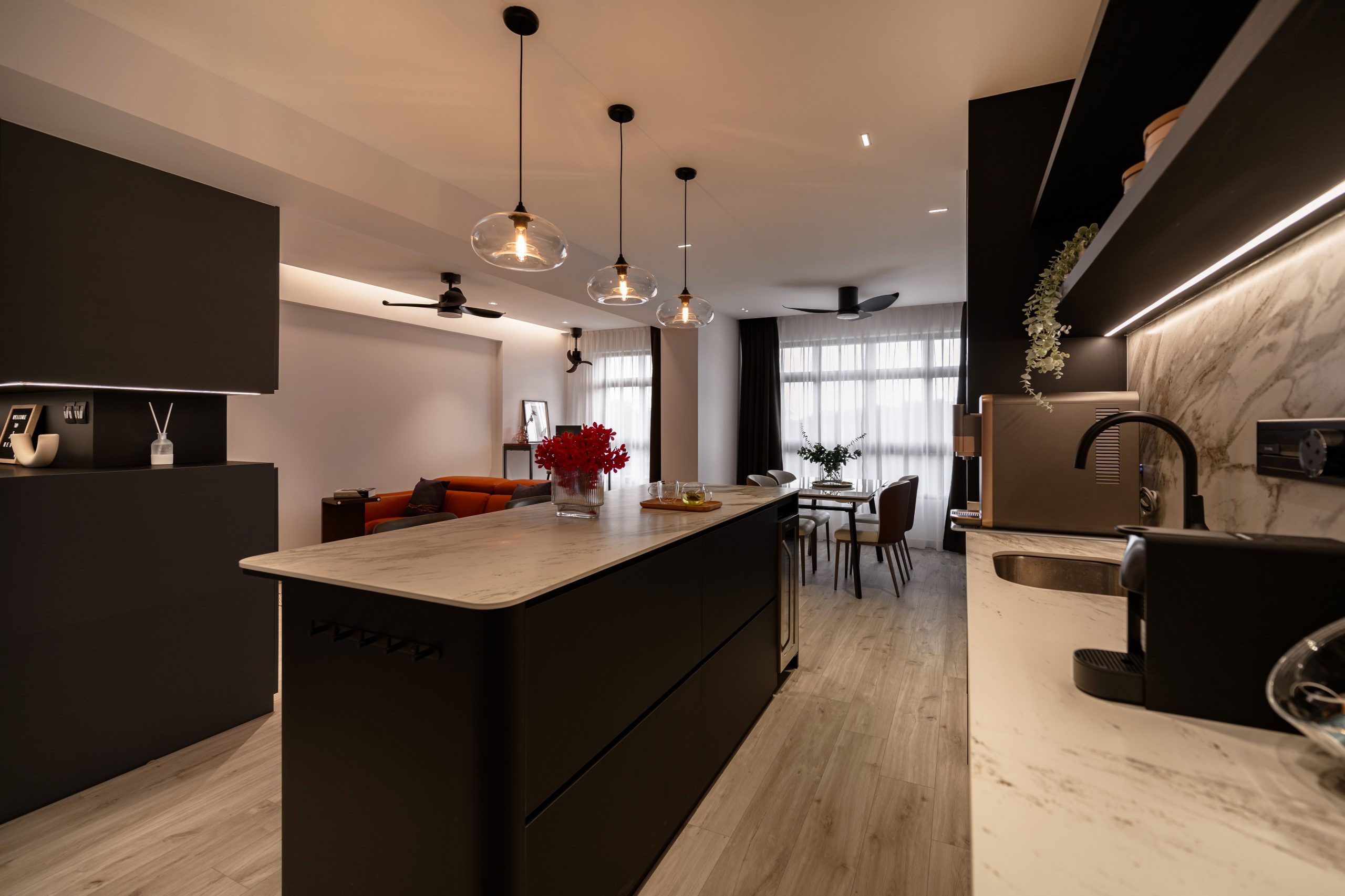Table of Contents
Toggle
Planning Your Renovation
Before starting any home renovation project, it is crucial to set a budget and determine your renovation goals. This will help you stay on track and make informed decisions throughout the renovation process. Once you have established a budget, you can begin identifying the areas of your home that need renovation. This could be a single room or multiple rooms, and it’s important to prioritize the areas that will have the most impact on your daily life. After identifying the areas that need renovation, you should research materials and labor costs. This will help you understand the costs associated with your renovation and make sure that you stay within your budget. Researching materials and labor costs can also help you identify cost-saving opportunities, such as using reclaimed materials or hiring a contractor with experience in budget-friendly renovations. By setting a budget, determining your renovation goals, identifying areas that need renovation, and researching materials and labor costs, you will be well on your way to a successful cheap house renovations.Cost-Saving Strategies
When it comes to budget-friendly home renovation, prioritizing renovations is crucial. This means focusing on the areas of your home that need the most attention and have the greatest impact on your daily life. By prioritizing renovations, you can ensure that you are getting the most out of your budget. Shopping for deals on materials is another great way to save money during a home renovation. This could include looking for sales, buying in bulk, or even purchasing reclaimed materials. Another cost-saving opportunity is to consider DIY projects. By tackling some projects yourself, you can save on labor costs and gain a sense of accomplishment. However, it’s important to be realistic about your skills and the scope of the project. Another cost-saving opportunity is to hire a contractor with experience in budget-friendly renovations. They will have a good understanding of cost-saving techniques, materials, and labor that can help you stay within your budget. They can also help you identify cost-saving opportunities that you may not have considered. It’s important to do your research and hire a contractor that you trust, who has a good reputation, and who is willing to work within your budget. By prioritizing renovations, shopping for deals on materials, considering DIY projects and hiring a contractor with experience in budget-friendly renovations, you can ensure that you stay on budget and get the most out of your home renovation project.
Another cost-saving opportunity is to hire a contractor with experience in budget-friendly renovations. They will have a good understanding of cost-saving techniques, materials, and labor that can help you stay within your budget. They can also help you identify cost-saving opportunities that you may not have considered. It’s important to do your research and hire a contractor that you trust, who has a good reputation, and who is willing to work within your budget. By prioritizing renovations, shopping for deals on materials, considering DIY projects and hiring a contractor with experience in budget-friendly renovations, you can ensure that you stay on budget and get the most out of your home renovation project.
Creative Solutions for Reducing Renovation Costs
One of the most effective ways to save money during a home renovation is by repurposing existing items in your home. This could include reusing furniture, decor, or even architectural elements. By repurposing existing items, you can save money and give them a new life in your home. Another cost-saving technique is to use paint to refresh a room. A fresh coat of paint can completely transform a space, and it is much more affordable than a complete remodel. Incorporating natural light into your home is another cost-saving technique. By utilizing natural light, you can reduce the need for artificial lighting and save on electricity costs. This can be achieved by adding skylights, installing larger windows, or even just removing heavy curtains or blinds to let in more natural light. Lastly, utilizing space-saving design techniques is a great way to make the most out of a small space. This could include using built-in furniture, utilizing vertical space, or even just reorganizing the layout of a room. By repurposing existing items, using paint to refresh a room, incorporating natural light, and utilizing space-saving design techniques, you can save money and create a beautiful home that is both functional and stylish.
Incorporating natural light into your home is another cost-saving technique. By utilizing natural light, you can reduce the need for artificial lighting and save on electricity costs. This can be achieved by adding skylights, installing larger windows, or even just removing heavy curtains or blinds to let in more natural light. Lastly, utilizing space-saving design techniques is a great way to make the most out of a small space. This could include using built-in furniture, utilizing vertical space, or even just reorganizing the layout of a room. By repurposing existing items, using paint to refresh a room, incorporating natural light, and utilizing space-saving design techniques, you can save money and create a beautiful home that is both functional and stylish.
Utilizing space-saving design techniques
Regular cleaning and maintenance is important to keep your home in good condition and ensure that it stays looking and feeling great. This includes things like dusting, vacuuming, and mopping, as well as keeping the bathrooms and kitchen clean and tidy. By taking the time to clean your home regularly, you can help to prevent the buildup of dirt and grime, as well as minimize the risk of allergens and other irritants that can cause health problems. Keeping up with home repairs is also important to ensure that your home remains safe and functional. This includes things like fixing leaks, replacing broken windows, and making sure that all appliances and systems are in good working order. By keeping up with repairs, you can help to prevent bigger and more expensive problems from developing down the line. Creating a home maintenance schedule can help you stay on top of all of the tasks that need to be done around your home. This can include things like cleaning, repairs, and energy-efficiency upgrades. A schedule can help you stay organized and ensure that you don’t forget to take care of important tasks. Tips for keeping your home energy-efficient include things like sealing leaks around windows and doors, insulating your home, and upgrading to energy-efficient appliances. By making these changes, you can help to reduce your energy bills and reduce your carbon footprint. Additionally, you can use natural light and switch off appliances and lights when not in use. This will save energy and money. A recap of the main points discussed is that regular cleaning and maintenance, keeping up with home repairs, creating a home maintenance schedule, and making energy-efficient upgrades are important to keep your home in good condition and ensure that it stays looking and feeling great. It’s also important to keep your home safe and functional by keeping up with repairs, and a schedule can help you stay organized and ensure that you don’t forget to take care of important tasks.
The emphasis on the importance of budget-friendly home renovation is that it’s possible to make significant changes to your home without breaking the bank. Whether you’re looking to update your kitchen, refresh your bathrooms, or add a new room, there are many ways to renovate on a budget that will allow you to achieve the look and feel you want while staying within your financial means.
Additional resources for those looking to renovate on a budget include websites, blogs, and magazines that offer tips and budget home renovation ideas. Online communities such as forums and social media groups can be great places to connect with other homeowners and get advice and inspiration. Additionally, there are many home renovation shows on television that can offer inspiration and guidance for those looking to renovate on a budget.
In conclusion, there are several strong reasons why you should consider hiring “Ovon-D” services of brand when you’re looking to redo your house on a budget. First, they specialize in providing cost-effective solutions that will help you stay within your budget while still achieving the look and feel you want for your home. Second, their team has a wealth of expertise and experience when it comes to budget friendly renovations, which means that you can trust that the work they do for you will be done to the highest standard. And finally, “Ovon-D” services of brand, is known for its attention to detail, which is essential when working on a budget. By choosing to work with “Ovon-D”, you can be sure that your home will be transformed to your satisfaction while sticking to the budget.
A recap of the main points discussed is that regular cleaning and maintenance, keeping up with home repairs, creating a home maintenance schedule, and making energy-efficient upgrades are important to keep your home in good condition and ensure that it stays looking and feeling great. It’s also important to keep your home safe and functional by keeping up with repairs, and a schedule can help you stay organized and ensure that you don’t forget to take care of important tasks.
The emphasis on the importance of budget-friendly home renovation is that it’s possible to make significant changes to your home without breaking the bank. Whether you’re looking to update your kitchen, refresh your bathrooms, or add a new room, there are many ways to renovate on a budget that will allow you to achieve the look and feel you want while staying within your financial means.
Additional resources for those looking to renovate on a budget include websites, blogs, and magazines that offer tips and budget home renovation ideas. Online communities such as forums and social media groups can be great places to connect with other homeowners and get advice and inspiration. Additionally, there are many home renovation shows on television that can offer inspiration and guidance for those looking to renovate on a budget.
In conclusion, there are several strong reasons why you should consider hiring “Ovon-D” services of brand when you’re looking to redo your house on a budget. First, they specialize in providing cost-effective solutions that will help you stay within your budget while still achieving the look and feel you want for your home. Second, their team has a wealth of expertise and experience when it comes to budget friendly renovations, which means that you can trust that the work they do for you will be done to the highest standard. And finally, “Ovon-D” services of brand, is known for its attention to detail, which is essential when working on a budget. By choosing to work with “Ovon-D”, you can be sure that your home will be transformed to your satisfaction while sticking to the budget.


